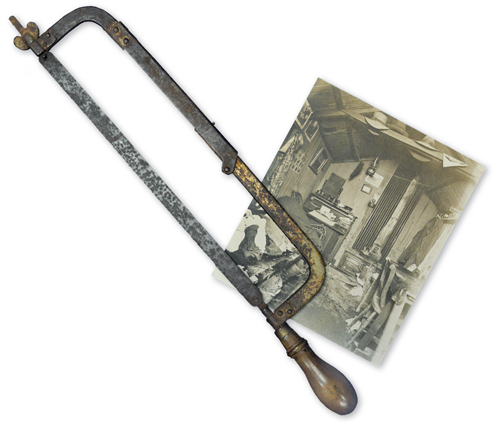
THE FIRST POLICE officer to attend the scene of a murder, or indeed most crimes, is often the officer on the beat or in a patrol car. Their role is to take steps to save or preserve life, call up medical support, ensure that any suspect does not leave the scene, find witnesses who may be immediately available and to call in the CID. In the early days of the Metropolitan Police, a detective would carry virtually no equipment at all, but this started to change at the beginning of the twentieth century when fingerprint expertise was introduced and crime scene photography became more commonly used. The ability to call in an experienced pathologist to the murder scene was recognised as very valuable, with Bernard Spilsbury being one of the first recognised as a specialist in this field. The local divisional surgeon called in to examine the victim no longer carried out a nineteenth-century post-mortem examination at the scene or nearby; the doctor would simply be called upon to pronounce life extinct.
Spilsbury had worked under Augustus Pepper from St Mary’s hospital at one stage and started to rise to prominence with the Dr Crippen case in 1911. Being a medical man, it was natural for Spilsbury to bring his medical instruments and equipment to a crime scene, and his comments to Detective Chief Inspector Percy Savage at the scene of The Crumbles murder in 1924 started the process of formalising what became known as the ‘murder bag’, which contained essential crime scene examination supplies and equipment. One of Spilsbury’s successors, Professor James ‘Taffy’ Cameron, later donated his own case to the museum. It would be another decade before the introduction of the Metropolitan Police Forensic Science Laboratory. The police progressively developed methods for collecting, transporting and storing exhibits without risking contamination. Exhibits have become smaller; in the 1960s, items would often reach the laboratory in large sweet jars but, nowadays, evidence may not be visible to the human eye. Scientific instruments and techniques have become more sophisticated and capable of detecting minute amounts of substances such as drugs.
A set of instructions – apparently printed in 1946 – were associated with the murder bags and contained crime scene advice that often aimed to avoid chemical and other types of contamination of exhibits, as well as ensuring that there was clear evidence of continuity to establish exactly where each item had been found. The list was as follows:
Do not allow exhibits to become contaminated.
Label all exhibits where they are found.
Do not forget to enter on the label the name of the officer who discovered the object and its exact location.
Do not place hair, fibres and other minute articles in envelopes or containers without first placing them in the white paper provided.
Do not place articles in improper containers.
Do not use dirty containers.
Do not allow fragile fragments to become disintegrated by being placed in loose containers.
Bullets and small articles for similar tests should be first wrapped in cotton wool and then placed in the cardboard containers provided.
Indelible pencil must not be used for entering any particulars.
Do not use ink when labelling liquids.
Do not place fibrous or cloth articles in receptacles containing cotton wool.
Do not put corrosive fluids in metal or cork stoppered containers. Use the glass stoppered container provided for this purpose and do not forget to seal the stopper with the rubber surgical tape.
Contaminated containers must be returned to C3 Branch for cleansing.
The contents of the ‘crime case’ were also listed:
Scissors
Metal probe
Forceps
Tape measure
Magnifying glass
Test tubes
Screw top glass jars
Glass-stoppered jar
Cardboard specimen boxes
Rubber surgical tape
Adhesive tape
Plain white cotton tape
Transparent bags
Labels
White paper
The protective gloves were not mentioned, but presumably became a natural part of officers’ equipment, along with aprons to protect their clothing. In modern times, the public has become used to crime scene examiners wearing disposable suits, having arrived in special vans with specialist equipment on board. In fact, the modern developments in crime scene investigation have often given primacy to the specialist crime scene examiners, who sometimes have to calculate the best sequence of applying various forensic techniques so as to ensure that, for instance, the application of chemicals to illuminate bloodstains does not interfere with the ability to retrieve fingerprints.

1924
Thorne’s hacksaw with a photograph of his hut